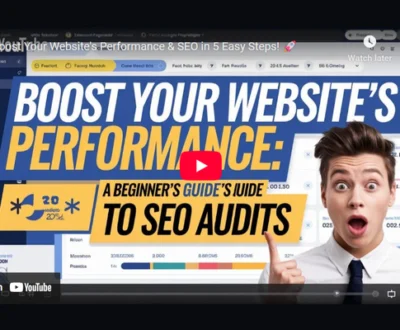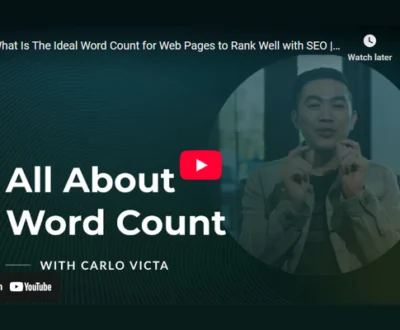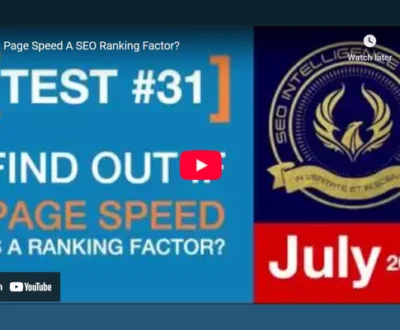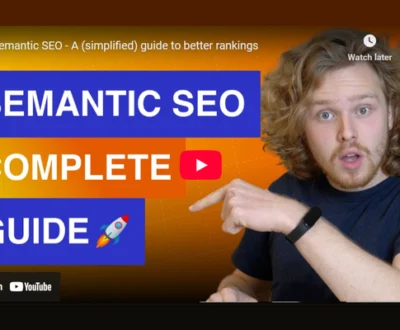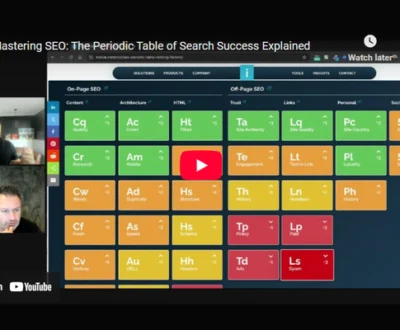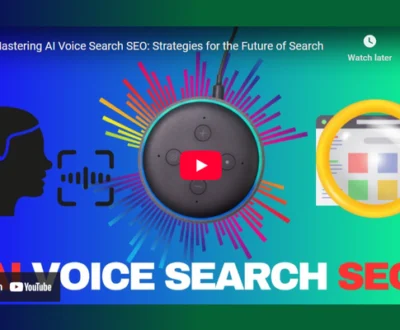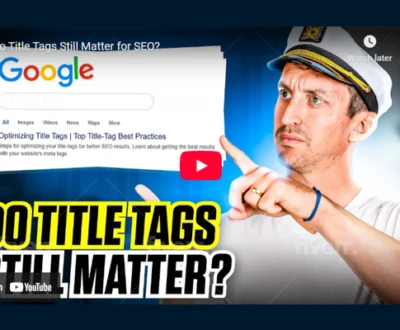So, you’ve got a landing page, but is it actually doing anything for you? Like, really *doing* anything? A lot of people build these pages thinking they’ll magically bring in customers, but if they aren’t set up right, they’re just kind of… there. We’re talking about making sure these pages show up when people search for what you offer, and then actually convince them to stick around and do what you want them to do. It’s not as complicated as it sounds, and it’s way better than just hoping for the best.
Key Takeaways
- Figure out what words people actually type into search engines when they’re looking for what you offer. Use these keywords throughout your page.
- Your page needs a clear title and headings that use those keywords. The content should be easy to read and explain what you do.
- Make sure your images are good quality but also small enough so the page loads fast. Nobody likes waiting around.
- Have a super obvious button or link that tells people exactly what to do next, like ‘Sign Up Now’ or ‘Learn More’.
- Check how your page is doing and make changes based on what works. It’s a constant process to get more people to convert.
Understanding the Purpose of a Landing Page
Think of a landing page as a very specific destination on your website. It’s not just another page; it’s built with a single goal in mind, usually to get a visitor to take a particular action. This action could be anything from signing up for a newsletter, downloading an ebook, requesting a demo, or making a purchase. Unlike your main website pages that might cover a broad range of information about your business, a landing page is laser-focused. It’s designed to eliminate distractions and guide the visitor directly towards that one desired outcome.
Keyword Research for Landing Pages
Before you even start writing a word or picking an image, you need to know what terms people are actually searching for. This is where keyword research comes in. You want to find words and phrases that your target audience uses when they’re looking for what you offer. Using these keywords naturally throughout your landing page helps search engines understand what your page is about, making it more likely to show up when someone searches for those terms. It’s like speaking the same language as your potential customers.
Crafting Compelling Headlines and Subheadings
Your headline is the very first thing a visitor sees, so it has to grab their attention immediately. It should clearly state what you’re offering and why it matters to them. Think of it as a promise. Subheadings then break up the text and guide the reader through the rest of the content, highlighting key benefits or features. They should be clear, concise, and support the main headline.
Writing Persuasive and Informative Body Copy
The body copy is where you explain your offer in more detail. It needs to be persuasive, convincing the visitor that your product or service is the solution they’re looking for. But it also needs to be informative, providing enough detail to answer their questions and build trust. Keep sentences relatively short and easy to read. Focus on the benefits for the customer, not just the features of your product.
Optimizing Images and Videos
Visuals can make a big difference, but they need to be optimized. Images and videos should be relevant to your offer and help tell your story. However, large files can slow down your page, which is bad for user experience and SEO. So, make sure your images are compressed and that videos are hosted on platforms like YouTube or Vimeo and embedded correctly. Alt text for images is also important for SEO and accessibility.
The Importance of a Clear Call-to-Action (CTA)
This is arguably the most important element. Your Call-to-Action (CTA) is the button or link that tells visitors exactly what you want them to do next. It needs to be prominent, clear, and action-oriented. Phrases like “Download Now,” “Sign Up Today,” or “Get Your Free Trial” are much more effective than vague terms. Without a strong CTA, all your other efforts might go to waste because people won’t know what step to take.
Key Elements of an SEO-Optimized Landing Page
When you’re building a landing page, it’s not just about looking good; it needs to work hard for you in search results too. This means focusing on several key elements that help search engines understand your page and encourage visitors to take action. Think of it as a two-pronged approach: making the page appealing to people and making it visible to Google. Getting this right is a big part of how to improve landing page performance.
Keyword Research for Landing Pages
Before you write a single word, you need to know what terms people are actually searching for. This is where keyword research comes in. You’re looking for words and phrases that your target audience uses when they’re looking for what you offer. Don’t just go for broad terms; try to find more specific, long-tail keywords. For example, instead of just ‘shoes,’ aim for ‘waterproof hiking boots for women.’ These longer phrases often attract visitors who are further along in their buying journey and are more likely to convert. Finding the right keywords is the foundation of optimizing web pages for search engines.
Crafting Compelling Headlines and Subheadings
Your headline is the first thing people see, so it needs to grab their attention immediately and clearly state what your page is about. It should ideally include your primary keyword. Subheadings break up your text, making it easier to read and scan. They also provide opportunities to use secondary keywords and guide the reader through the information on the page. Think about what problem you’re solving for the visitor and make that clear upfront.
Writing Persuasive and Informative Body Copy
The body copy is where you convince visitors that your offer is the solution they need. It should be clear, concise, and focused on the benefits for the user, not just features. Address their pain points and explain how your product or service can help. Use your keywords naturally throughout the text, but don’t stuff them in. The goal is to inform and persuade, making it easy for the reader to understand the value proposition. Remember, clarity is key to landing page conversion rate optimization.
Optimizing Images and Videos
Visuals can make your landing page more engaging, but they also need to be optimized for SEO. This means using descriptive file names and alt text for your images. Alt text helps search engines understand what the image is about, and it’s also important for accessibility. For videos, consider adding transcripts or captions to make them searchable and accessible. Large media files can slow down your page, so make sure they are compressed without losing too much quality.
The Importance of a Clear Call-to-Action (CTA)
Every landing page needs a clear, compelling call-to-action. This is what you want the visitor to do next, whether it’s ‘Download Now,’ ‘Sign Up Today,’ or ‘Request a Quote.’ Your CTA button should stand out visually and use action-oriented language. Make it obvious what will happen when they click. A strong CTA guides the user towards the conversion goal and is a vital part of making your landing page effective.
Technical SEO Considerations for Landing Pages

Beyond the words on the page and the images you use, there are some behind-the-scenes technical things that really matter for landing page SEO. Think of it like making sure the foundation of your house is solid before you start decorating. If the tech stuff isn’t right, all your other efforts might not get the attention they deserve from search engines.
Page Speed and Mobile-Friendliness
Nobody likes a slow website, right? Search engines know this too. Pages that load quickly, especially on mobile devices, tend to perform better. If your landing page takes ages to load, people will just leave, and Google notices that. Making sure your page is optimized for speed and looks good on phones and tablets is non-negotiable. This often means compressing images, cleaning up code, and using efficient hosting. It’s a big part of writing content for search visibility.
URL Structure and Meta Descriptions
The web address, or URL, for your landing page should be clear and descriptive. Something like yourwebsite.com/landing-page-topic is much better than a jumble of random characters. It helps both users and search engines understand what the page is about. Similarly, the meta description is that little snippet you see under the main title in search results. It’s your chance to entice people to click. Make it count by including relevant keywords and a clear benefit. Getting this right is a key part of SEO best practices for landing pages.
Internal and External Linking Strategies
While landing pages are often created for specific campaigns, they shouldn’t exist in a vacuum. Linking to your landing page from other relevant pages on your website (internal linking) helps search engines discover it and understand its context within your site. Conversely, if your landing page offers something truly useful, like a detailed guide or a helpful tool, other websites might link to it (external linking). These backlinks signal to search engines that your page is a credible resource. Just be mindful of not linking out too much from your landing page, as you don’t want to send visitors away from your conversion goal.
Testing and Iterating for Maximum Performance

Once you’ve built your landing page, the work isn’t really done. In fact, it’s just beginning. To make sure your page is actually doing its job, you need to test and tweak things. It’s like cooking – you taste and adjust the seasoning until it’s just right.
Keyword Research for Landing Pages
Even after launch, you should keep an eye on how your chosen keywords are performing. Are they bringing in the right kind of visitors? Sometimes, what you thought would work doesn’t quite hit the mark. It’s worth revisiting your keyword data to see if there are better, more specific terms you could be targeting. Long-tail keywords, for example, can often bring in people who are really ready to convert.
Crafting Compelling Headlines and Subheadings
Your headline is the first thing people see, so it needs to grab them. But what if it’s not working as well as you’d hoped? Try different versions. Maybe a question works better than a statement, or perhaps a different benefit highlighted upfront will grab more attention. The same goes for subheadings – they guide the reader, so make sure they’re clear and inviting.
Writing Persuasive and Informative Body Copy
Does your copy clearly explain what you’re offering and why someone should care? Test different ways of saying it. You might find that focusing on a specific problem and its solution works better than just listing features. Keep sentences varied in length to make it easier to read.
Optimizing Images and Videos
Visuals matter. If you’re using photos, try different ones. A happy customer might work better than a product shot, or vice versa, depending on your audience. Make sure your images are relevant and load quickly. If you have videos, ensure they’re also optimized for speed and mobile viewing.
The Importance of a Clear Call-to-Action (CTA)
This is where you tell people what to do next. Is your CTA button clear? Is the text on it compelling? You might test different button colors – not just for looks, but to see if a certain color stands out more on your page. Also, test the wording. Does “Sign Up Now” get more clicks than “Get Started Today”?
Testing isn’t just about guessing what might work. It’s about systematically trying different elements to see what actually gets results. You need to be willing to change things based on the data, not just what you think looks good.
Here’s a quick look at what you might test:
- Headlines: Different wording, different benefits.
- Body Copy: Shorter vs. longer, problem/solution focus.
- Call-to-Action (CTA): Button text, button color, button placement.
- Forms: Number of fields required.
- Images/Videos: Different visuals that evoke different emotions.
Don’t forget to track your results using analytics software. Tools like Google Analytics can show you what’s working and what’s not, helping you make smarter decisions for your next round of tests.
We constantly test and tweak our methods to get the best results. This ongoing process helps us make sure everything is running as smoothly and quickly as possible. Want to see how we can boost your site’s speed? Visit our website today!
Wrapping It Up
So, we’ve gone through how to make your landing pages work better for search engines. It’s not just about stuffing keywords everywhere, though. You really need to think about what people are searching for and make sure your page actually helps them. Using your own domain, picking the right long-tail keywords, and putting them in the right spots on your page are all big steps. Plus, don’t forget about page speed and making sure your content is actually useful so people want to share it. It takes some effort, but getting that organic traffic from search engines can really pay off for your business in the long run.
Frequently Asked Questions
What exactly is a landing page?
Think of a landing page as a special page on your website made to get people to do one specific thing, like buying something or signing up. It’s like a salesperson for your business that’s open 24/7.
Why is SEO important for landing pages?
SEO helps your landing page show up higher in search results when people look for things related to what you offer. This means more people will find your page without you having to pay for ads.
How do I find the right keywords for my landing page?
You need to find words and phrases (keywords) that people actually type into search engines. Then, you use these keywords naturally in your page’s title, headings, and text so search engines understand what your page is about.
Does page speed and mobile-friendliness matter for landing pages?
Yes, making sure your page loads quickly and works well on phones is super important. If it’s slow or hard to use on a phone, people will leave before they even see what you offer.
What is a call-to-action (CTA) and why is it needed?
A clear call-to-action tells visitors exactly what you want them to do next, like ‘Buy Now’ or ‘Download Free Guide.’ It’s like giving them a clear direction to follow.
Should I test different parts of my landing page?
You should always test different versions of your landing page to see what works best. Changing headlines, images, or the call-to-action can make a big difference in how many people take the action you want.
Windee Tan is a seasoned SEO Specialist with over a decade of experience helping businesses grow their organic visibility through data-driven strategies. He specializes in technical SEO, content optimization, and local search, with deep knowledge of tools like GA4, GSC, SEMrush, and Screaming Frog. Windee is passionate about translating complex SEO insights into practical tactics that drive real-world results. When he's not auditing sites or crafting keyword strategies, he’s exploring the latest trends in AI, digital marketing, and productivity.
About this blog
We are a digital marketing company with a focus on helping our customers achieve great results across several key areas.
Request a free quote
We offer professional SEO services that help websites increase their organic search score drastically in order to compete for the highest rankings even when it comes to highly competitive keywords.
Subscribe to our newsletter!
More from our blog
See all postsRecent Posts
- Writing Clear Calls to Action That Boost On-Page SEO 21 August 2025
- Why Word Count Still Matters in On-Page SEO Today 20 August 2025
- Why Site Speed Is Critical for On-Page SEO Success 19 August 2025


